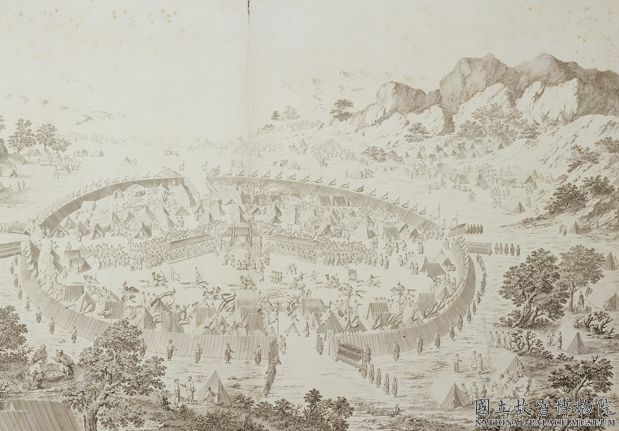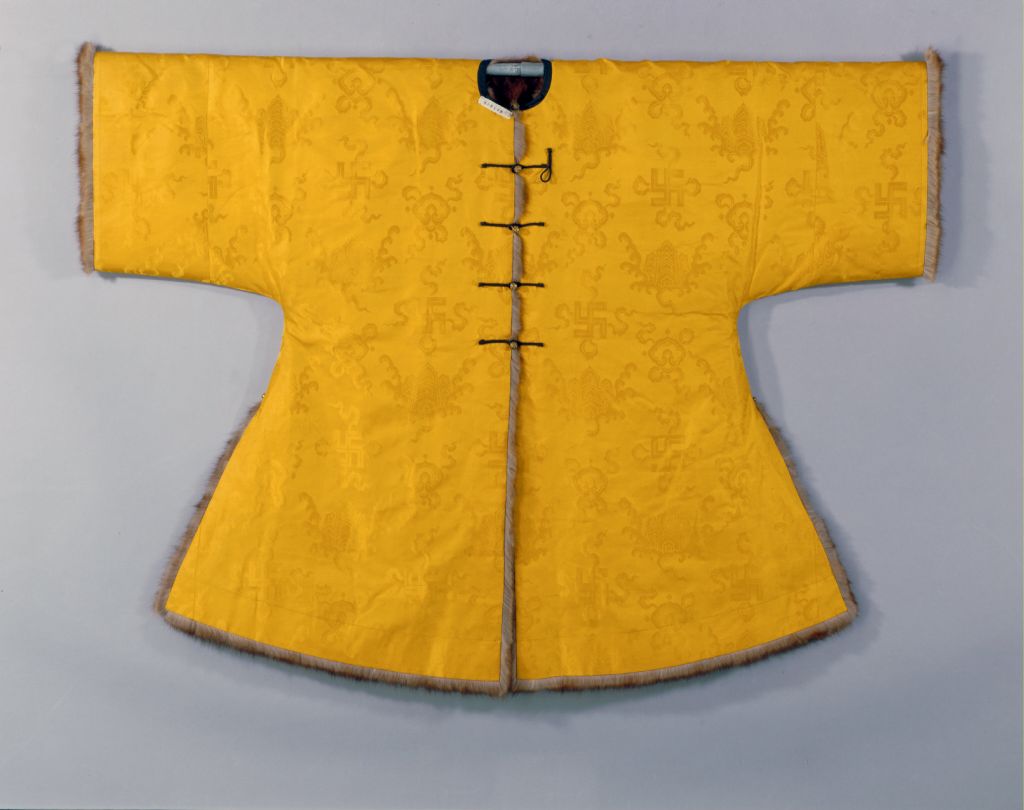[Gu Embroidery Vajra Sutra Tower Axis]
Gu Embroidery Vajra Sutra Tower Axis, in the Qianlong period of the Qing Dynasty, is 213 centimeters long and 69 centimeters wide
This axis embroiders the Diamond Sutra Pagoda on eight satin floors. The tower has a total of 7 floors, with a red round gold thread as the frame from bottom to top, and the Vajra is embroidered inside the frame through twists and turns. The situation where the lowest level embroidered bodhisattva asks a question to Sakyamuni sitting on the lotus seat. Sakyamuni sits reclined, with his left hand resting on his knee, and his right hand applying a statement seal. The scripture starts from above Sakyamuni’s head, and is embroidered from right to left according to the echo pattern. The fourth layer in the middle of the tower is embroidered with a small tower, and the other six layers are embroidered with different versions of Sakyamuni. This scroll has a novel form and unique embroidery method. The Vajra scriptures are embroidered with blue silk thread in the palindrome frame, and the characters are embroidered with needle techniques such as rolling needle, oblique winding needle, and set needle. The embroidery of figures is also meticulous, using sets of needles, mesh embroidery, hair applying needles, oblique winding needles, and rolling needles. The Vajra Pagoda is embroidered with gold thread, red round gold thread, and silver thread using the flat gold needle method. Because the outline of the pagoda is all made of gold, the golden light of the Sutra Pagoda shines brightly, presenting a solemn and mysterious atmosphere. This axis is a unique and rare Buddhist theme embroidery among existing Gu embroidery works.
![图片[1]-Guxiu Diamond Sutra Tower Axis-China Archive](https://chinaarchive.net/Warring States period/tapestry and embroidery/13709[1024].jpg)

![[Qing Dynasty] British female painter—Elizabeth Keith, using woodblock prints to record China from the late Qing Dynasty to the early Republic of China—1915-China Archive](https://chinaarchive.net/wp-content/uploads/2022/11/image-191x300.png)



